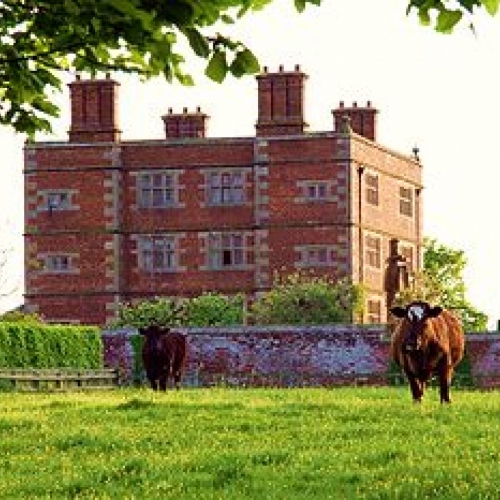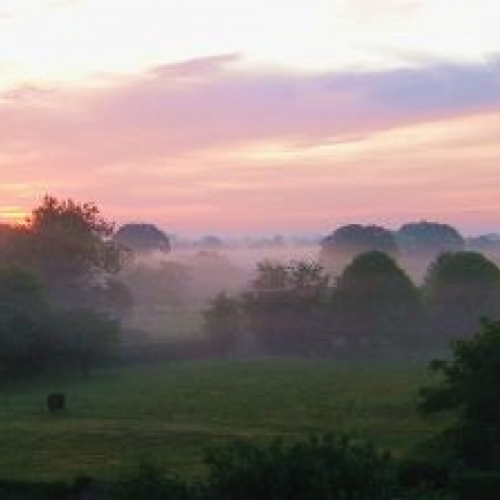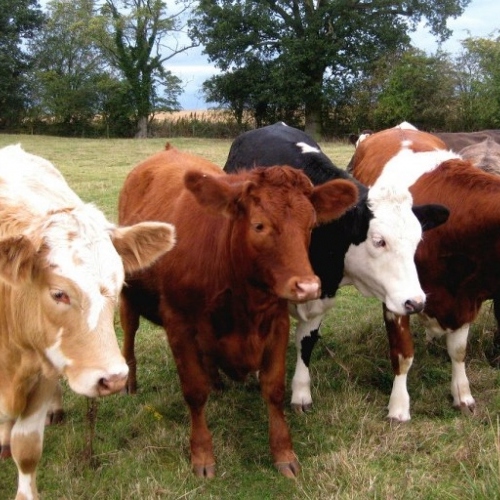Farming Journal Aricle
Tim Ashton recently worte the following article.
For more on our history visit here, and on farming go here.
=====
Soulton's 4,000 years of Farming
There cannot be a farm in the UK without a long history. Much of this country will have been farmed since at least 2,0000BC: indeed, in the Bronze Age they farmed land which is too marginal to be worked today. My family has farmed Soulton in Shropshire for a long while, and we are lucky in that our farm has a solid set of records reaching back to a little before the Conquest, and there is some physical evidence to interpret its story over the ages too.
Iron Age farmers have left physical evidence of their occupation of this farm. 4,000 years ago, at the very north of the farm, there were round houses and stock enclosures. In the field you cannot see anything of them (save drainage issues in 2012) but on aerial images a dozen or so large circles under the crops are plane to see, and there were big Iron Age communities not far away at Oswestry and Burry Walls.
The Romans built a road from Chester to their fourth largest city through the farm, and must have worked the land.
The name “Soulton” comes from Saxon days. It means “settlement with the ‘SÅ«l’ (plough)”. In those days, Beorhtric had this farm (with others); he was the brother of Eadric Streona (Æthelred the Unready's son-in-law, last Ealdorman of Mercia, and BBC's History's "Worst Britain"). The pair of them were murdered by King Cnut on Christmas Day, 1017 as part of the process of the unification of the older Kingdoms of Mercia, Wessex etc in one Kingdom of England.
At the Conquest (1066), all land ownership was reset. Two things happened to Soulton: first, a motte and bailey castle was built (its mound is still here), setting the boundary with Wales; second, the ownership of the farm was transferred to royal chapel in nearby Shrewsbury Castle, with the profit of the farm going to support the clerics there.
From this time on, the written record for the farm is benefited from the holding’s status as a manor. There were two squabbles about its ownership that made it to courts in London in the twelfth and thirteenth centuries, and one of Shropshire First MPs, Yvo de Soulton, owned the place in the late 12000s. The practical farming in these days was done by families whose farmsteads were in the teens of acres, and their names have survived in the field names further from the 'home lands': "Massey’s Rough", "Clay’s Bank" etc.
In the mediaeval period three water mills were installed, running off the brook. These were kept until the middle 1800s, and it is remarkable to think what an undertaking they were, and to see the roads they built to support their work. There are parallels between the instillation of these mills and our contemporary drive to get farm scale mirco-generation restored to Soulton with ground source heating and solar PV.
The farm was bought in 1556 by the first Protestant Lord Mayor of London, Sir Rowalnd Hill. He was in danger as Bloody Mary was setting about the Counter Reformation, and, for him, setting up on a manor 150 miles away from that terror was a pragmatic thing to do. He built a striking brick manor house to improve the ancient timber framed hall he found from the Twynihos how had been there for the previous 200 years.
Over time the farmsteading arrangements around the farm were consolidated into a more and more centralized operation, ranging over the whole holding, a process which was basically complete by 1783, when a set of brick barns were raised by the hall. In common with most other farms there was much investment in the 1840s, and again the 20th century as farming moved on.
The mixed farming which had been practiced in the 1800 and 1900s became specialised in dairy until the 1980s, when the farm became arable. Around this time tourism diversifications began, and the house now operates as a hotel, with cottages and weddings. The farming and heritage of the household play an important role in the distinctive identity of these diversifications.
====
Media Content
Further media content can be found here. Click here for a link to the historic field names.













